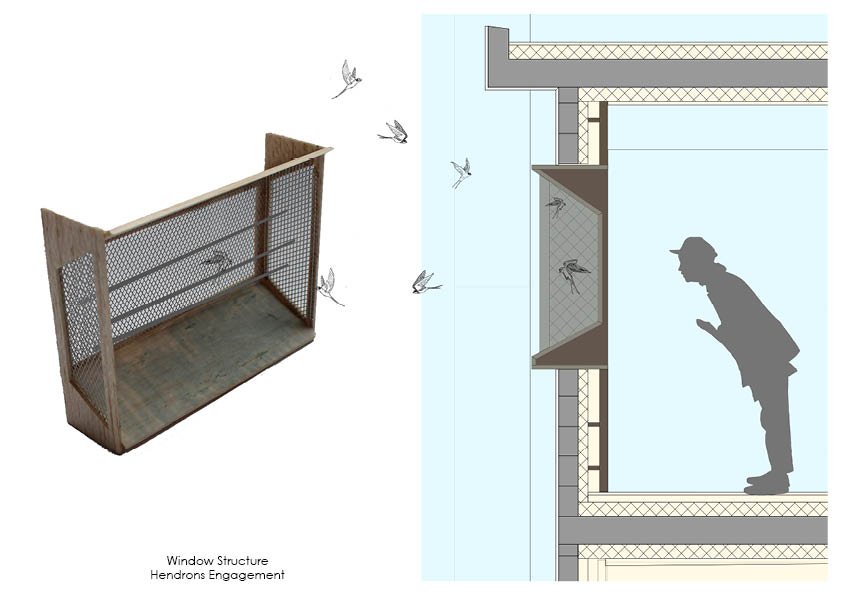Inhabiting what we don’t
With cities sprawling out further and further and rural areas being over farmed consistently; overall avian populations have been declining at a steady rate. Birds that were once a common sight in urban areas, are now sparsely seen. This is due in part to the lack of available food in city centres as well as the annually destroyed habitats that birds have relied upon during their migratory season. Our desire to seal off buildings to the outdoor environments means that where once attics, eaves and sills were seen as heated habitats for opportunistic birds to make use of, are now no longer available. If a bird is caught within the boundaries of a human structure, they are seen as pests, intruders, and vermin.
Avian Migration - Global
Avian Migration - Provincial
The following work aims to construct a diverse site, one of the more seamless interactions between humans and birds, with a focus on delivering a safe environment for birds to inhabit. The purpose is to push how we wish to define our interactions with birds and other urban creatures and question how we can design more harmoniously for non-human actors in the city.
Interacting with human environments
Avian Migration - Urban
Avian Migration - Structure
In Broadstone, birds rely on human structures for safety due to limited natural habitats. The Royal Canal's corridor offers little space for other life forms, except for Blessington Basin. This basin serves as a sanctuary for birds and separates them from humans, leading to limited interaction.
Hendrons Model
At the end of the former branch of the royal canal, there stands the Hendrons building. The existing building (Hendrons) which has previously served as a symbolic structure, a clear example of the beginning of the modern movement in Dublin, now stands to be a symbol for a different movement, dereliction. Where once humans inhabited this environment, after much decay and disinterest, local flora and fauna have reclaimed this site.
With this change in occupancy, what can we learn from these non-human actors in how to design more holistically? Where modern structures strived to seal themselves off from the outdoors, now can they do the opposite? Be a building concerned with refitting elements of its envelope with sustainable and ecologically friendly habitats.
Site Condition
Beginning with the historic structure, opening up its sealed façade to the local environment begs the question of how much we should design for all actors in the urban environment. Should buildings block migration paths or enhance them?
Site Plan
Section - Starling Shed
The following work aims to construct a diverse site, one with more seamless interactions between humans and birds, with a focus on delivering a safe environment for birds to inhabit. The purpose is to push how we wish to define our interactions with birds and other urban creatures and question how we can design more harmoniously for non-human actors in the city.
Ground Floor Plan
Section - Song Thrush Hut
Cross Section

















